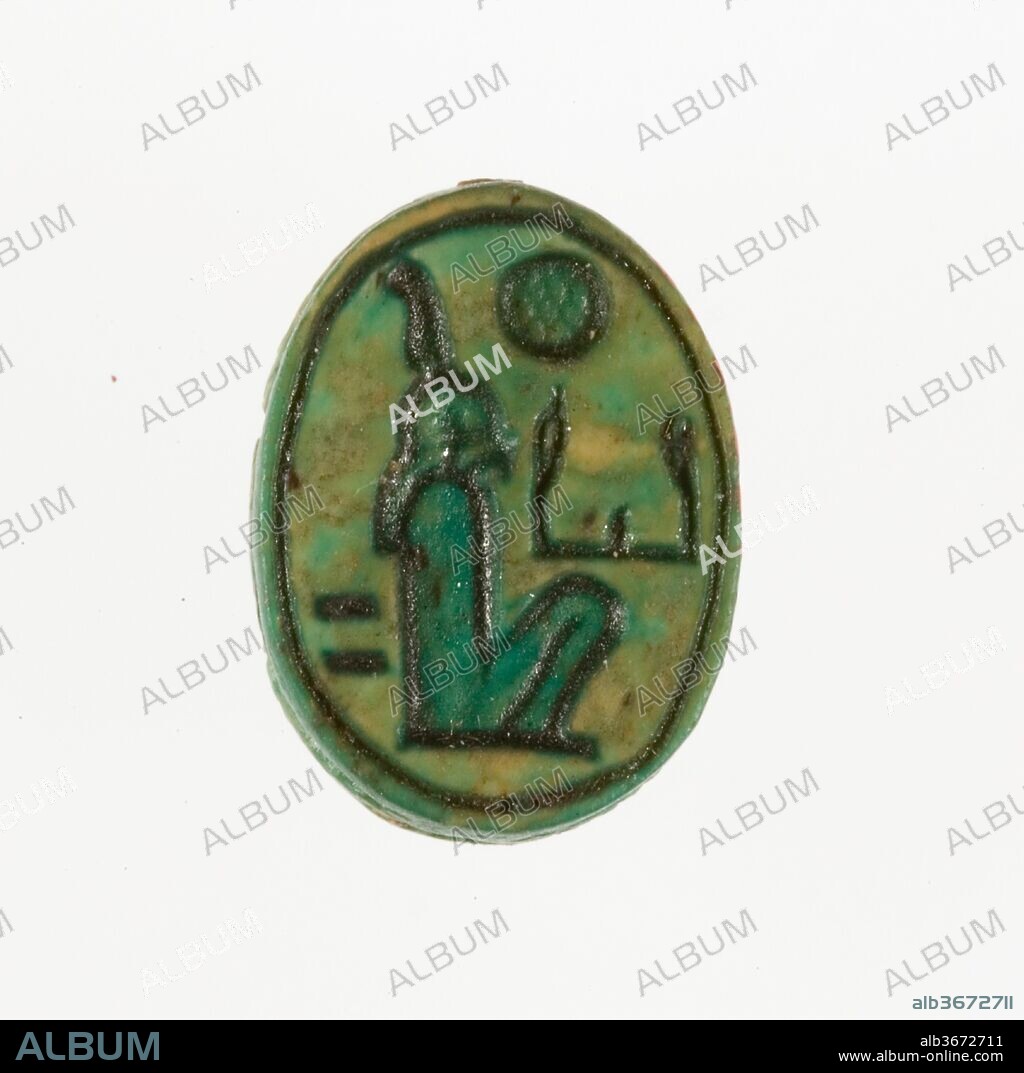alb3672711
Scarab Inscribed with the Name Maatkare (Hatshepsut)

|
Add to another lightbox |
|
Add to another lightbox |



Title:
Scarab Inscribed with the Name Maatkare (Hatshepsut)
Caption:
Scarab Inscribed with the Name Maatkare (Hatshepsut). Dimensions: L. 1.5 cm (9/16 in.); w. 1.1 cm (7/16 in.). Dynasty: Dynasty 18, early. Reign: Joint reign of Hatshepsut and Thutmose III. Date: ca. 1479-1458 B.C..
During the 1926-1927 excavation season, the Museum's Egyptian Expedition uncovered three foundation deposits along the eastern enclosure wall of Hatshepsut's funerary temple at Deir el-Bahri in Western Thebes. Among the contents were 299 scarabs and stamp-seals. Sixty-five of these are now in the Egyptian Museum, Cairo, and the rest were acquired by the Museum in the division of finds.
Among the inscriptions on the bases of these scarabs and seals are examples of every title Hatshepsut held, from the time she was "king's daughter" during the reign of her father, Thutmose I; through the time she was queen of her half-brother, Thutmose II; and during her regency and co-reign with her nephew/step-son, Thutmose III.
After the death of her husband, Hatshepsut became regent for her nephew who was a small child. The length of this regency period is uncertain, with estimates ranging from two to seven years. At some time, probably toward the end of the regency, Hatshepsut adopted the name Maatkare which was usually enclosed in a cartouche and became her throne name as king. The name may be roughly translated as Maat (the goddess of truth) is the life force of Re (the sun god). In the inscription on the base of this scarab, the crouching figure of the goddess is identified by the ostrich plume, the word ka is written with the upstretched arms, and Re is represented by the sun disk.
Technique/material:
Steatite (glazed)
Period:
NEW KINGDOM
Museum:
Metropolitan Museum of Art, New York, USA
Credit:
Album / Metropolitan Museum of Art, NY
Releases:
Model: No - Property: No
Rights questions?
Rights questions?
Image size:
2550 x 2540 px | 18.5 MB
Print size:
21.6 x 21.5 cm | 8.5 x 8.5 in (300 dpi)
Keywords:
AFRICA • EGYPT • EGYPTIAN ART • FROM EGYPT, UPPER EGYPT, THEBES, DEIR EL-BAHRI, TEMPLE OF HATSHEPSUT, FOUNDATION DEPOSIT 9 (I), MMA EXCAVATIONS, 1926-27 • GLAZING • METROPOLITAN MUSEUM OF ART, NEW YORK, USA • NEW KINGDOM • SCARABS • SCULPTURE • STEATITE (GLAZED) • STEATITE • TALC • THÈBES • UPPER EGYPT
 Pinterest
Pinterest Twitter
Twitter Facebook
Facebook Copy link
Copy link Email
Email

